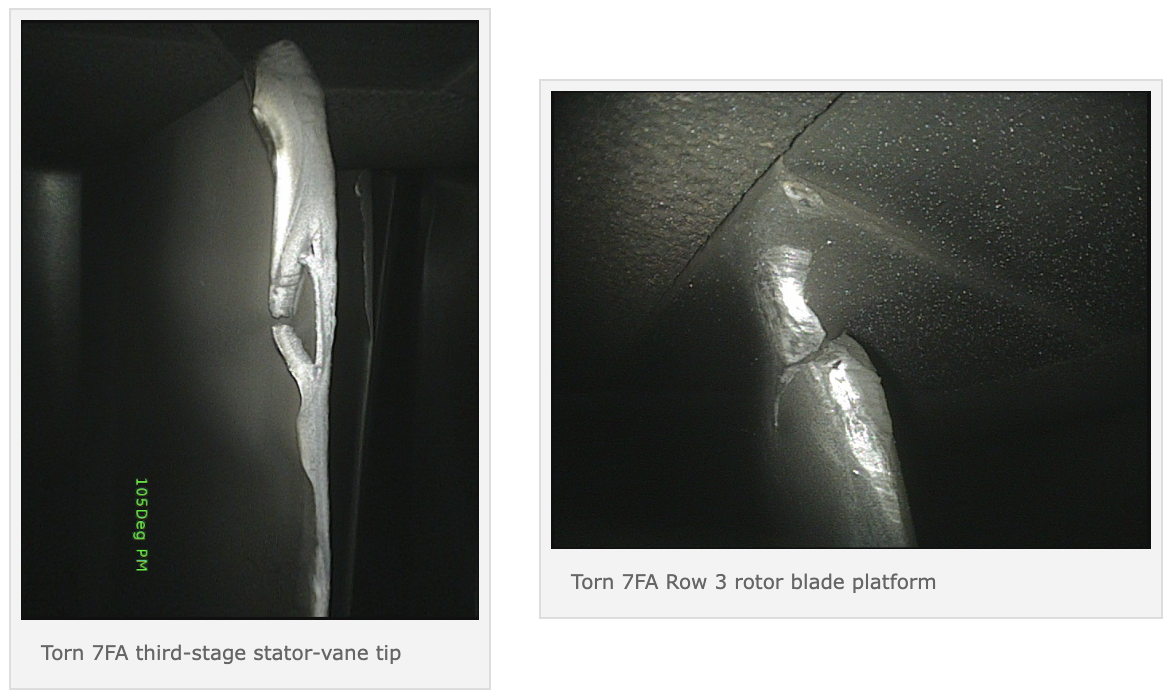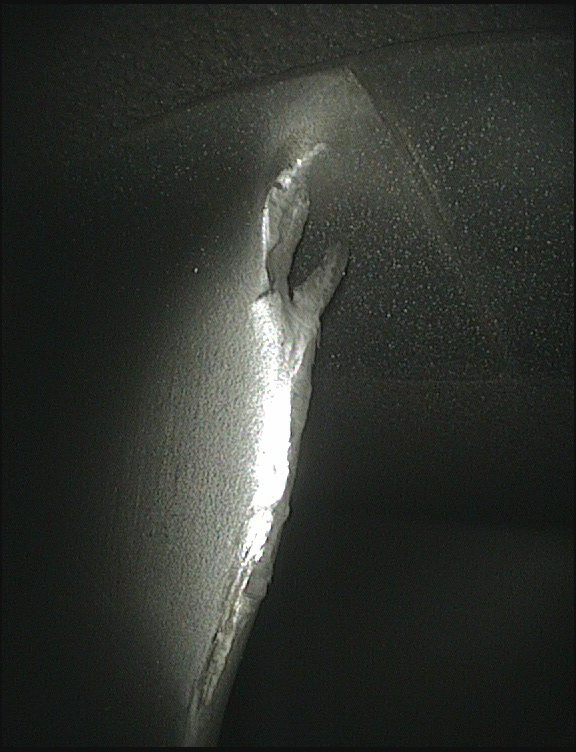Clashing, the term used to describe contact between rotating blades and stationary vanes in Frame 7 compressors, has been a hot topic at meetings of the 7EA User Group for years. In fact, it was a headline item in the State-of-the-Engine report by Advanced Turbine Support at the 7EA meeting last fall. Service Manager Mike Hoogsteden stressed the need to borescope regularly and to document clashing findings to minimize the possibility of catastrophic loss. He said field data have revealed increases in clashing damage over time. Absent an OEM advisory on how users should deal with clashing when identified, Advanced Turbine Support recommended a simple five-step procedure.
Earlier this week, Hoogsteden called CCJ’s editorial offices to say that an Advanced Turbine Support inspection team had just found significant clashing damage in a 7FA. Note that clashing between the trailing edge of rotor blades and the leading of stator vanes almost always occurs in Stage 1 of 7EA compressors and in Stages 2 and 3 of 7FA compressors. In this most recent case, the damage was identified in Stage 3 of an unflared 7F compressor and was severe enough to cause a forced outage (photos). Hoogsteden reminded that the probability of clashing is not necessarily related to unit operating history. This type of damage has been found on flared and unflared compressors with as few as 190 total starts and 1465 fired hours.
 If clashing damage is found, Hoogsteden recommended a follow-up clashing-specific inspection, followed by a 25-start inspection interval until repairs can be performed.He also said that it is easy to overlook clashing during a standard borescope inspection because of where the damage occurs. It takes an experienced technician with sophisticated NDE tools and techniques to do the proper inspection, he added. For 7EAs, Hoogsteden said, Advanced Turbine Support would likely recommend eddy current testing of rotor blades and stator vanes; however, a dye-penetrant inspection could be done as well. For 7FAs, the company has successfully performed limited eddy-current inspections of stator vanes in both Stages 2 and 3.
If clashing damage is found, Hoogsteden recommended a follow-up clashing-specific inspection, followed by a 25-start inspection interval until repairs can be performed.He also said that it is easy to overlook clashing during a standard borescope inspection because of where the damage occurs. It takes an experienced technician with sophisticated NDE tools and techniques to do the proper inspection, he added. For 7EAs, Hoogsteden said, Advanced Turbine Support would likely recommend eddy current testing of rotor blades and stator vanes; however, a dye-penetrant inspection could be done as well. For 7FAs, the company has successfully performed limited eddy-current inspections of stator vanes in both Stages 2 and 3.



